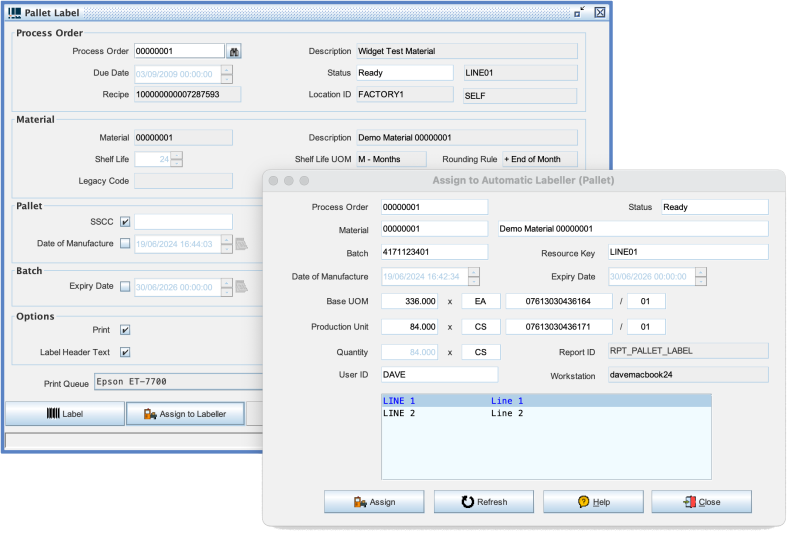LabelServer4j Operation: Difference between revisions
No edit summary |
No edit summary |
||
| Line 1: | Line 1: | ||
Category:LabelServer4j | [[Category:LabelServer4j]] | ||
The easiest way to work with the LabelServer application is to drive it from the Commander4j desktop software. In the screen below you will see the Pallet Labelling screen. The operator selects the order and then uses the "Assign to Labeller" button. They can then choose the production line which the order data is sent to. This data is exported via the Commander4j Interfaces in CSV format. The LabelServer program reads this data and sends it to the labellers which are defined in the configuration. | The easiest way to work with the LabelServer application is to drive it from the Commander4j desktop software. In the screen below you will see the Pallet Labelling screen. The operator selects the order and then uses the "Assign to Labeller" button. They can then choose the production line which the order data is sent to. This data is exported via the Commander4j Interfaces in CSV format. The LabelServer program reads this data and sends it to the labellers which are defined in the configuration. | ||
Latest revision as of 19:50, 31 August 2024
The easiest way to work with the LabelServer application is to drive it from the Commander4j desktop software. In the screen below you will see the Pallet Labelling screen. The operator selects the order and then uses the "Assign to Labeller" button. They can then choose the production line which the order data is sent to. This data is exported via the Commander4j Interfaces in CSV format. The LabelServer program reads this data and sends it to the labellers which are defined in the configuration.
More information on label printing can be found in the Commander4j wiki in the Production Declaration and Pallet Label pages. The data exported from the Commander4j is written to the folder defined within the Production Lines & Labellers screen.
